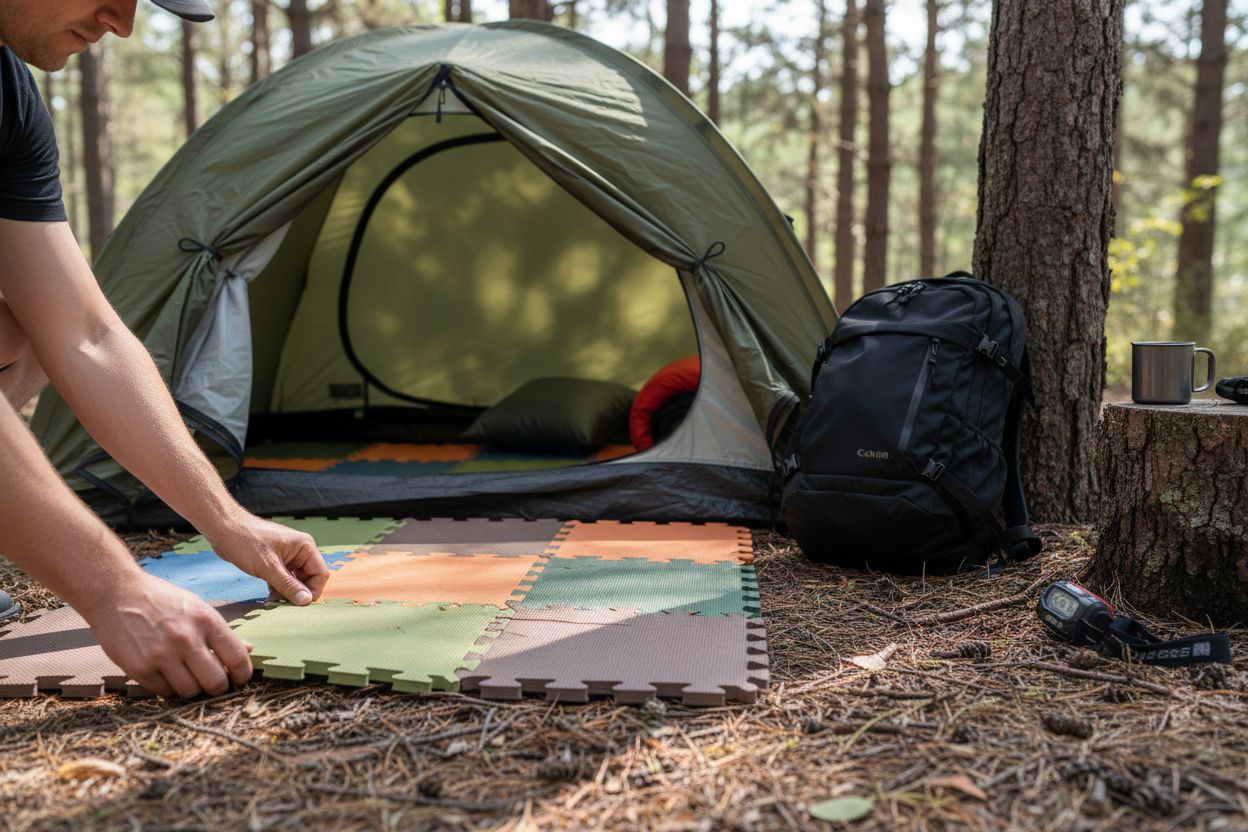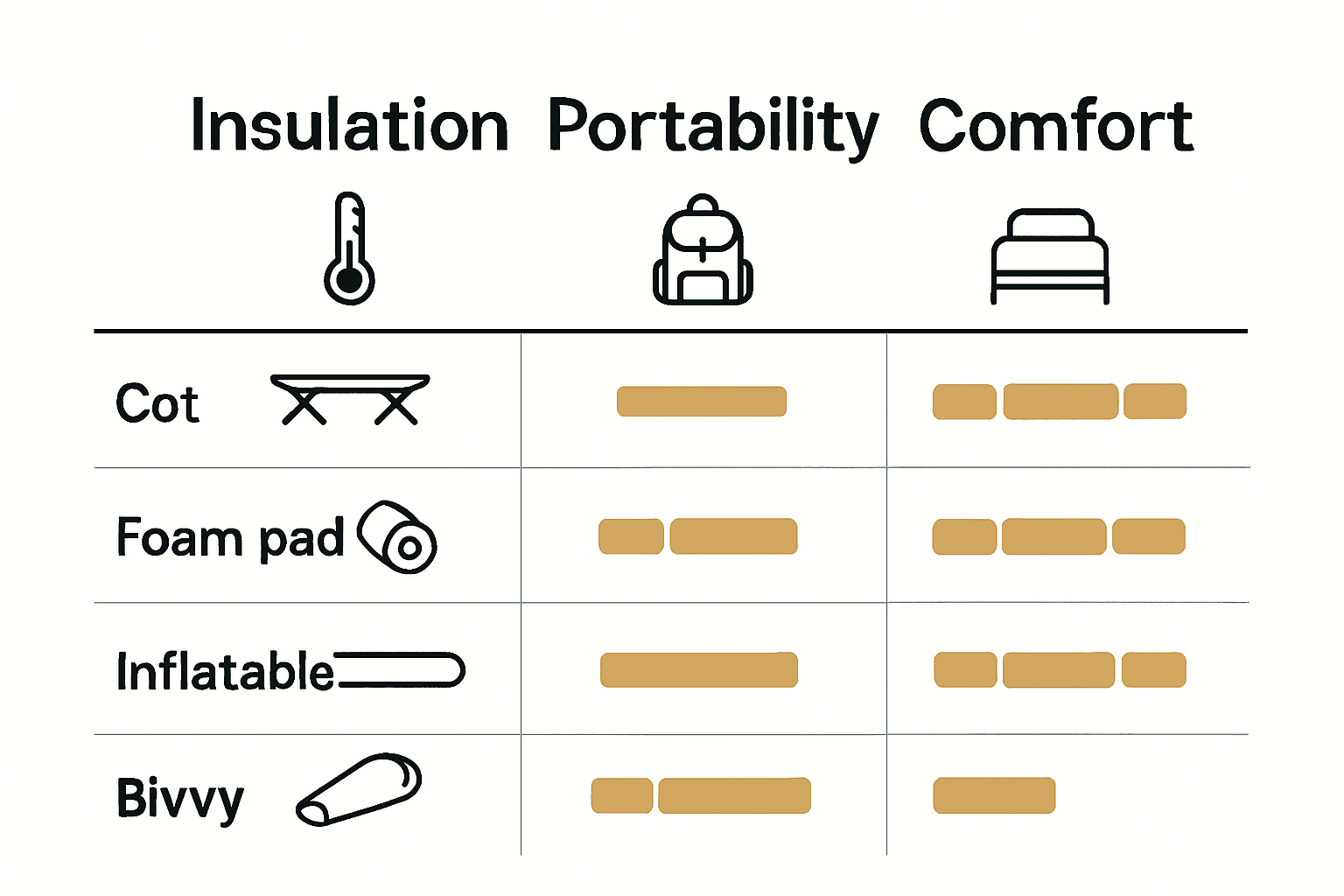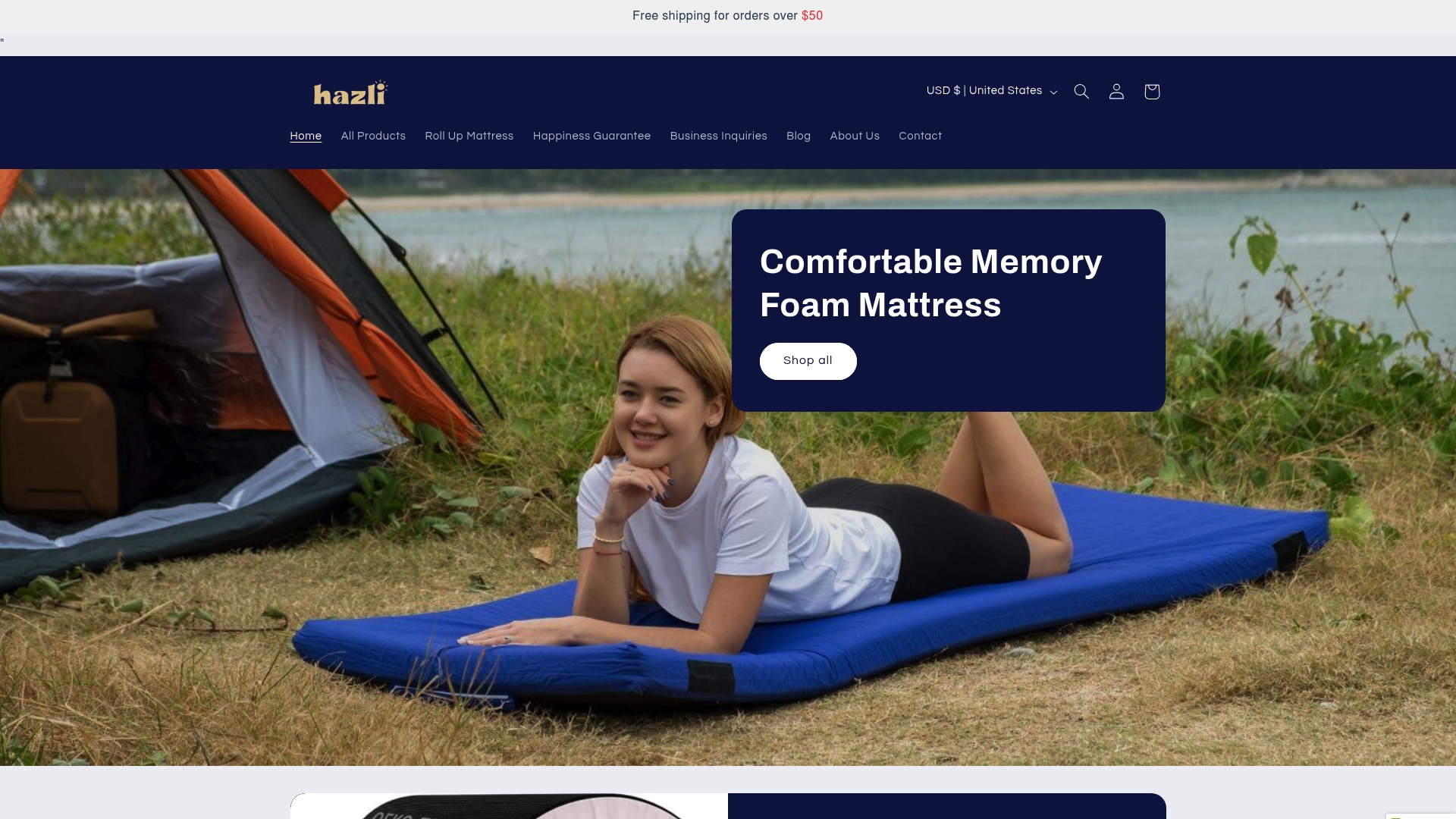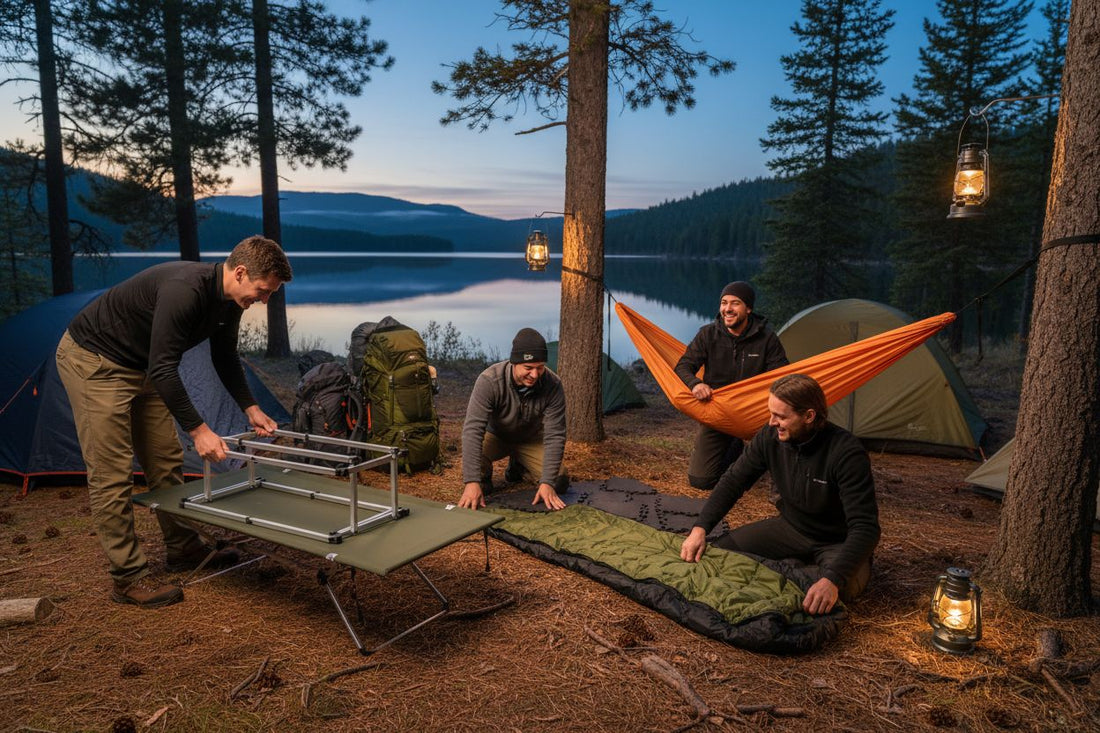Did you know that more than 70 percent of campers try alternatives to standard sleeping pads to improve their outdoor rest? The right sleeping setup can make or break a night under the stars, directly shaping your comfort and energy for the days ahead. From camping cots to foam tiles and unconventional gear, there’s a growing range of options that fit different camping styles, environments, and budgets, giving every outdoor enthusiast a better shot at restful sleep.
Key Takeaways
| Point | Details |
|---|---|
| Variety of Alternatives | Campers can choose from several sleeping pad alternatives, including cots, foam pads, and bivvy sacks, depending on their needs and environment. |
| Performance Factors | Insulation, portability, and comfort are critical when selecting a sleeping solution, as they impact overall outdoor sleeping experience. |
| Pros and Cons | Each sleeping alternative has distinct advantages and drawbacks that should be weighed based on personal preferences and camping style. |
| Tailored Selection | Choosing the best option requires aligning the sleeping solution with terrain, temperature, and individual comfort requirements for optimal outdoor sleep. |
Table of Contents
- What Are Sleeping Pad Alternatives?
- Types Of Sleeping Pad Alternatives Explained
- Key Features: Insulation, Portability, Comfort
- Comparing Pros And Cons Of Each Option
- Choosing The Best Sleeping Solution Outdoors
What Are Sleeping Pad Alternatives?
When exploring outdoor sleeping solutions, adventurers have numerous alternatives to traditional sleeping pads that can provide comfort, insulation, and protection from the ground. Sleeping pad alternatives range from improvised options to specialized camping gear, offering flexibility for different environments, budgets, and personal preferences.
According to research from backpacking experts, several practical alternatives exist for campers seeking comfortable ground coverage. These include camping cots that elevate you off the ground, insulated emergency bivvy sacks, thick bedrolls, foam tiles, and even unconventional solutions like inflatable pool floats. Each option brings unique advantages:
- Camping Cots: Provide elevation and protection from cold ground
- Foam Tiles: Offer customizable layering and lightweight padding

- Hammocks: Reduce pressure points and provide a suspended sleeping experience
- Emergency Bivvy Sacks: Add warmth and compact protection
While these alternatives can work effectively, their performance depends on specific camping conditions, personal comfort preferences, and the type of outdoor environment you’ll encounter. Choosing the right sleeping pad alternative requires considering factors like temperature, terrain, pack weight, and intended use. For more insights into optimizing your outdoor sleep setup, check out our guide on improving camp sleep naturally.
Types of Sleeping Pad Alternatives Explained
Campers and outdoor enthusiasts have multiple sleeping pad alternatives that cater to different needs, environments, and comfort preferences. Understanding these options helps adventurers select the most suitable ground coverage for their specific camping conditions.
According to research from camping experts, sleeping pad alternatives can be categorized into several distinct types. These include foam-based solutions that offer unique insulation properties, manual inflatable options, and elevated sleeping platforms:
Foam-Based Solutions:
- Self-Inflating Foam Pads: Open-cell foam that expands when a valve is opened, providing lightweight comfort and insulation
- Closed-Cell Foam Pads: Dense, durable, and moisture-resistant pads that are budget-friendly but bulkier
Inflatable and Elevated Options:
- Manual Inflatable Pads: Lightweight cushioned options requiring manual inflation, balancing comfort and portability
- Camping Cots: Elevated platforms ideal for car camping, offering durability and consistent support
Additional alternatives include lightweight blankets for mild weather and versatile yoga mats that can be layered for extra insulation. The key is matching your sleeping alternative to your specific outdoor environment, expected temperature range, and personal comfort requirements. Want more tips on maximizing outdoor sleeping comfort? Check out our guide to camping comfort hacks.
Key Features: Insulation, Portability, Comfort
Choosing the right sleeping pad alternative involves carefully balancing three critical performance factors: insulation, portability, and overall comfort. Each sleeping solution offers a unique combination of these features, requiring campers to understand their specific outdoor needs and environment.
Here’s a comparison of popular sleeping pad alternatives by key features:

| Sleeping Pad Alternative | Insulation | Portability | Comfort Level |
|---|---|---|---|
| Self-Inflating Foam Pad | High | Moderate | Excellent |
| Closed-Cell Foam Pad | Good | Bulky, Lightweight | Fair |
| Camping Cot | Moderate | Heavy, Bulky | Superior |
| Manual Inflatable Pad | Moderate | Very Compact | Adjustable |
| Foam Tiles | Good | Customizable | Moderate |
| Emergency Bivvy Sack | Fair | Ultra-Lightweight | Minimal |
| Hammock | Low (w/o pad) | Lightweight | Unique, Pressure-Free |
| Blanket/Yoga Mat | Low | Extremely Portable | Variable |
According to camping research, different alternatives excel in different areas. Memory foam solutions provide unique outdoor comfort considerations that impact these key features:
Insulation Performance:
- Self-Inflating Foam Pads: Highest insulation-to-weight ratio
- Closed-Cell Foam Pads: Excellent moisture resistance and thermal protection
- Camping Cots: Provide elevation, reducing ground contact and heat loss
Portability Considerations:
- Manual Inflatable Pads: Lightweight and compact when deflated
- Foam Tiles: Modular design allows easy customization and transport
- Blankets/Yoga Mats: Extremely lightweight and easy to pack
The ultimate goal is finding a sleeping solution that matches your specific camping style, body type, and environmental conditions. While no single alternative is perfect for every scenario, understanding these trade-offs helps outdoor enthusiasts make informed decisions about their ground sleeping setup.
Comparing Pros and Cons of Each Option
Choosing the right sleeping pad alternative requires carefully weighing the strengths and limitations of each option. Sleeping solutions vary dramatically in performance, making it crucial to understand their unique characteristics before making a selection.
According to camping research, each alternative presents distinct advantages and drawbacks. Our outdoor sleep solutions guide highlights these nuanced trade-offs:
Foam-Based Options:
-
Self-Inflating Foam Pads
- Pros: Excellent insulation, easy to inflate, comfortable
- Cons: Typically more expensive, potential puncture risks
-
Closed-Cell Foam Pads
- Pros: Extremely durable, puncture-resistant, budget-friendly
- Cons: Bulky, minimal cushioning, less comfortable
Elevated and Inflatable Alternatives:
-
Camping Cots
- Pros: Maximum comfort, elevation from ground, good air circulation
- Cons: Heavy, bulky, challenging to transport
-
Manual Inflatable Pads
- Pros: Lightweight, packable, adjustable firmness
- Cons: Require manual inflation, potential cold spots, less insulation
Ultimately, the best choice depends on your specific camping style, physical needs, and environmental conditions. Backpackers might prioritize lightweight options, while car campers could opt for more substantial comfort solutions. Consider your priorities—weight, insulation, comfort, or cost—to make the most informed decision.
Choosing the Best Sleeping Solution Outdoors
Selecting the perfect outdoor sleeping solution isn’t a one-size-fits-all decision. Sleeping comfort depends on understanding your specific camping environment, personal preferences, and the unique demands of your outdoor adventure.
Research highlights several critical factors for making the right choice. Our camp bedding organization guide provides insights into tailoring your sleeping setup:
Key Selection Criteria:
-
Weight and Packability
- Backpackers: Prioritize lightweight, compact options
- Car Campers: Can choose bulkier, more comfortable solutions
-
Terrain Considerations
- Wet/Rocky Ground: Elevated cots or thick foam pads
- Minimalist Trips: Emergency bivvy or lightweight blankets
Comfort Customization Factors:
- Match insulation to expected temperature range
- Consider personal sleeping style and body type
- Evaluate trip duration and equipment carrying capacity
Ultimately, the best sleeping solution balances four critical elements: comfort, weight, insulation, and cost. Some campers might sacrifice a bit of cushioning for lighter weight, while others prioritize a plush sleeping surface. Your ideal choice will depend on your unique combination of outdoor needs and personal preferences.
Discover Hassle-Free Outdoor Comfort with Hazli Collection
Struggling to find true comfort outside after reading about so many sleeping pad alternatives? You know the frustration of comparing insulation, portability, and comfort while still waking up sore from the hard ground. At Hazli Collection, we take the guesswork out of your outdoor sleep. Our high-quality memory foam mattresses and practical gear provide you with the support and reliability missing from many traditional and alternative solutions discussed in this guide. Whether you seek lightweight solutions for backpacking, or crave plush comfort at the campsite, our products help you rest easy and wake up refreshed.

Stop letting discomfort dictate your adventure. Elevate your next camping experience with premium outdoor bedding designed by a family-run team committed to quality and convenience. Visit the Hazli Collection and explore our expert outdoor sleep solutions today. Order now for comfort you can trust on every trip.
Frequently Asked Questions
What are some alternatives to traditional sleeping pads?
Many alternatives to traditional sleeping pads include camping cots, insulated emergency bivvy sacks, thick bedrolls, foam tiles, and inflatable pool floats. Each option provides different levels of comfort and insulation.
How do self-inflating foam pads compare to closed-cell foam pads?
Self-inflating foam pads offer high insulation, excellent comfort, and easy inflation but can be more expensive. Closed-cell foam pads, while bulky and offering less cushioning, are durable, budget-friendly, and provide good insulation properties.
What factors should I consider when choosing a sleeping pad alternative?
Consider factors such as insulation needs based on expected temperatures, portability for easy transport, comfort levels based on personal preferences, and the terrain you will be camping on.
Can I use a hammock as an alternative to a sleeping pad?
Yes, a hammock can be a comfortable alternative to a sleeping pad, especially in areas with trees. It reduces pressure points and offers a unique, suspended sleeping experience, though it may require an additional sleeping pad for better insulation.

